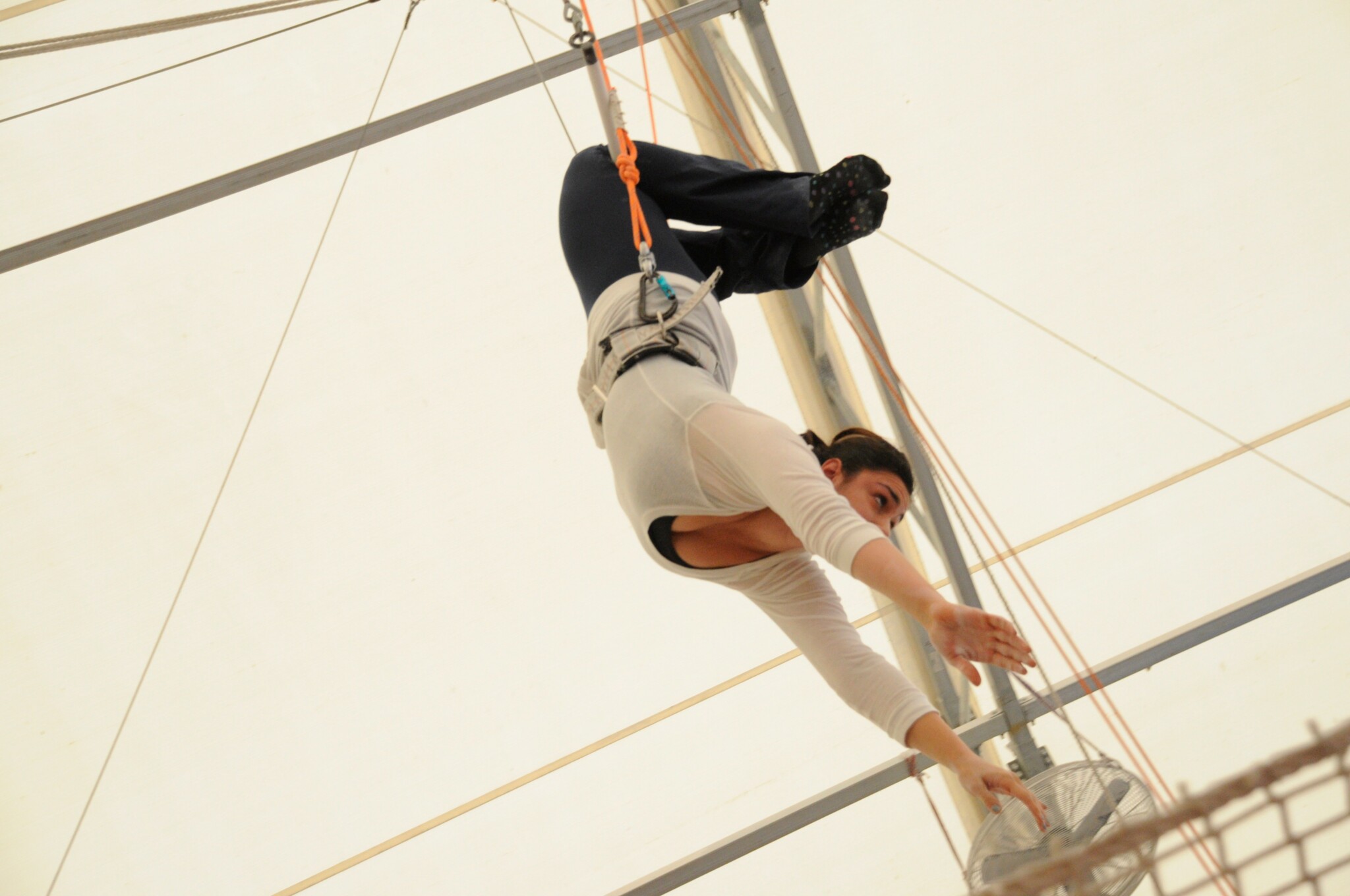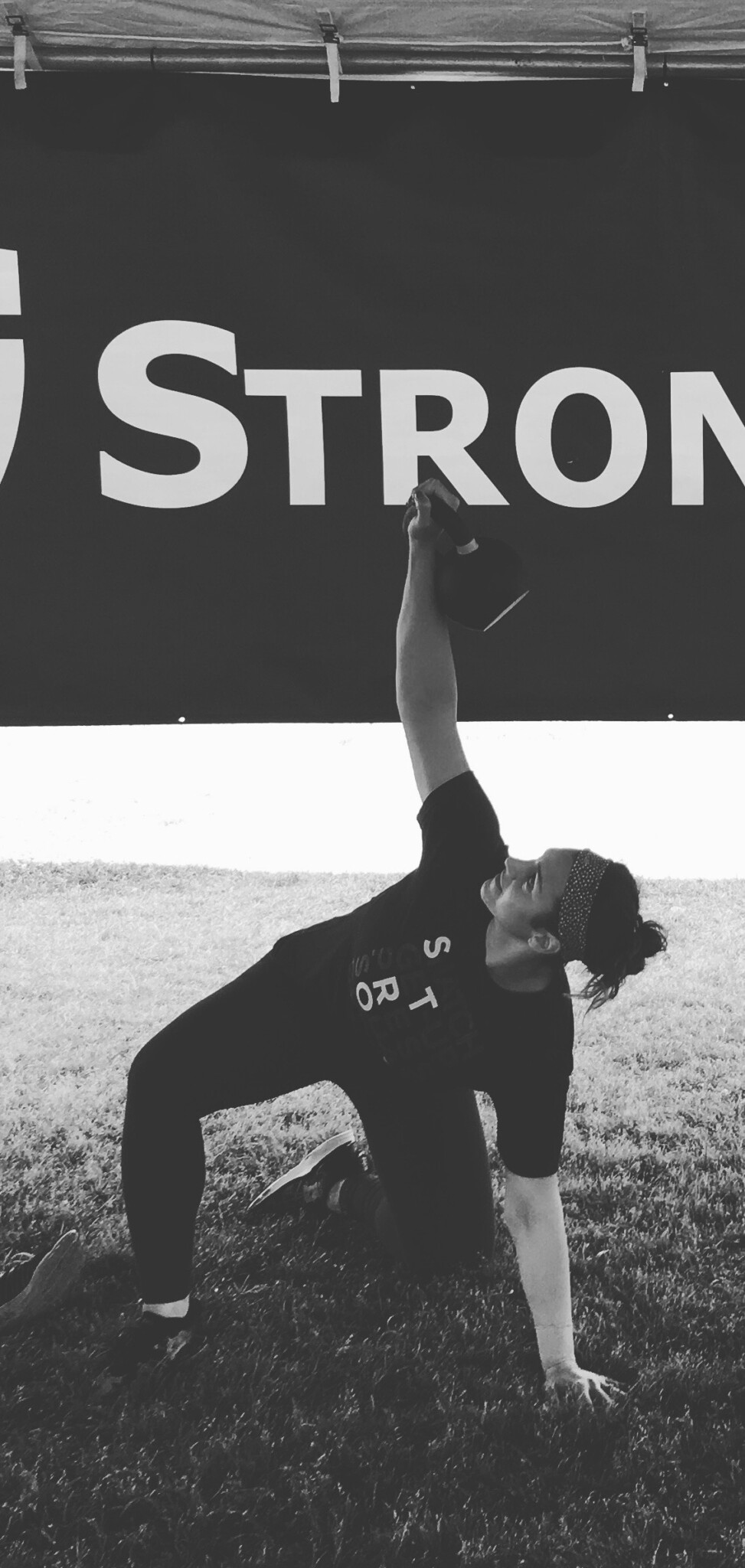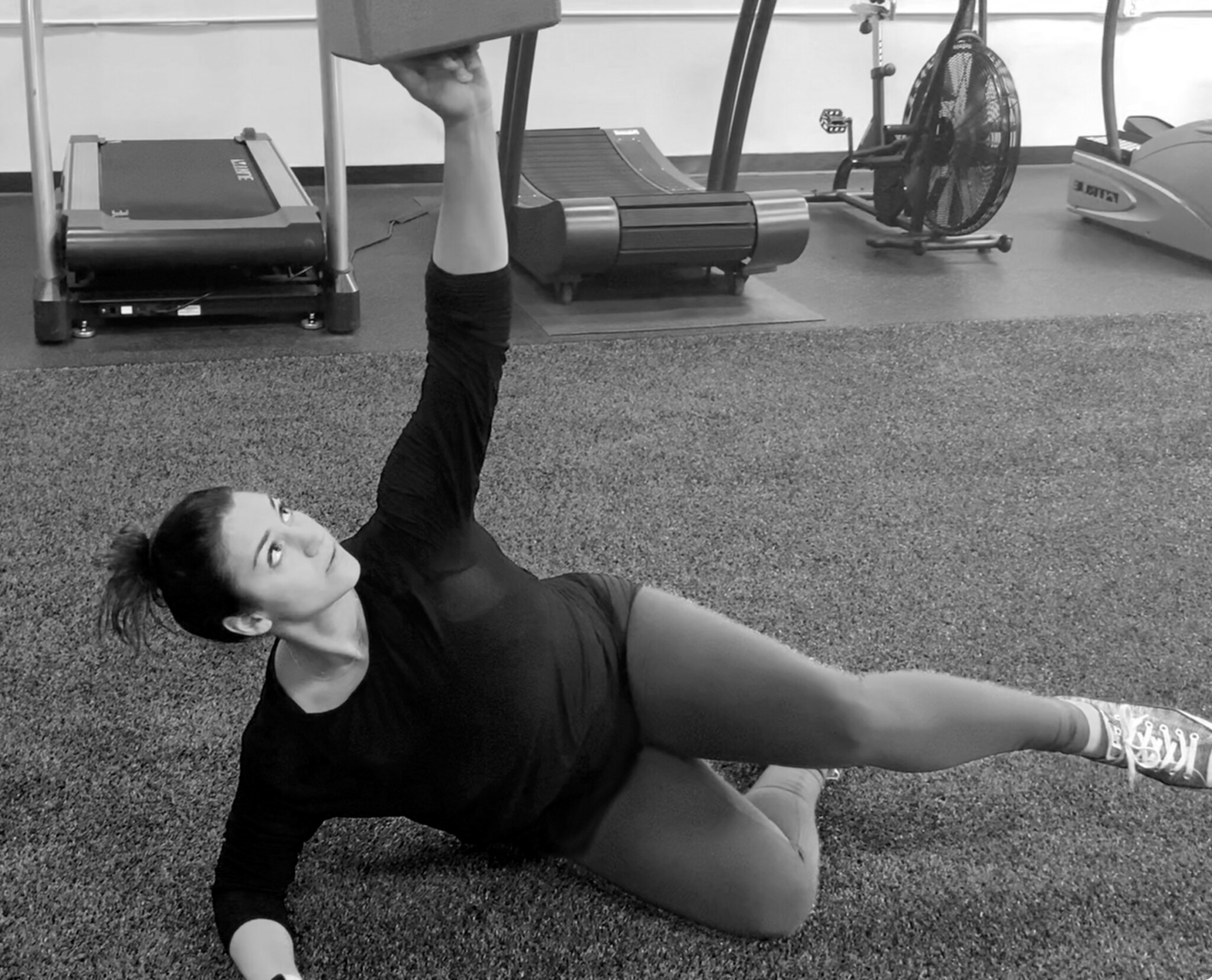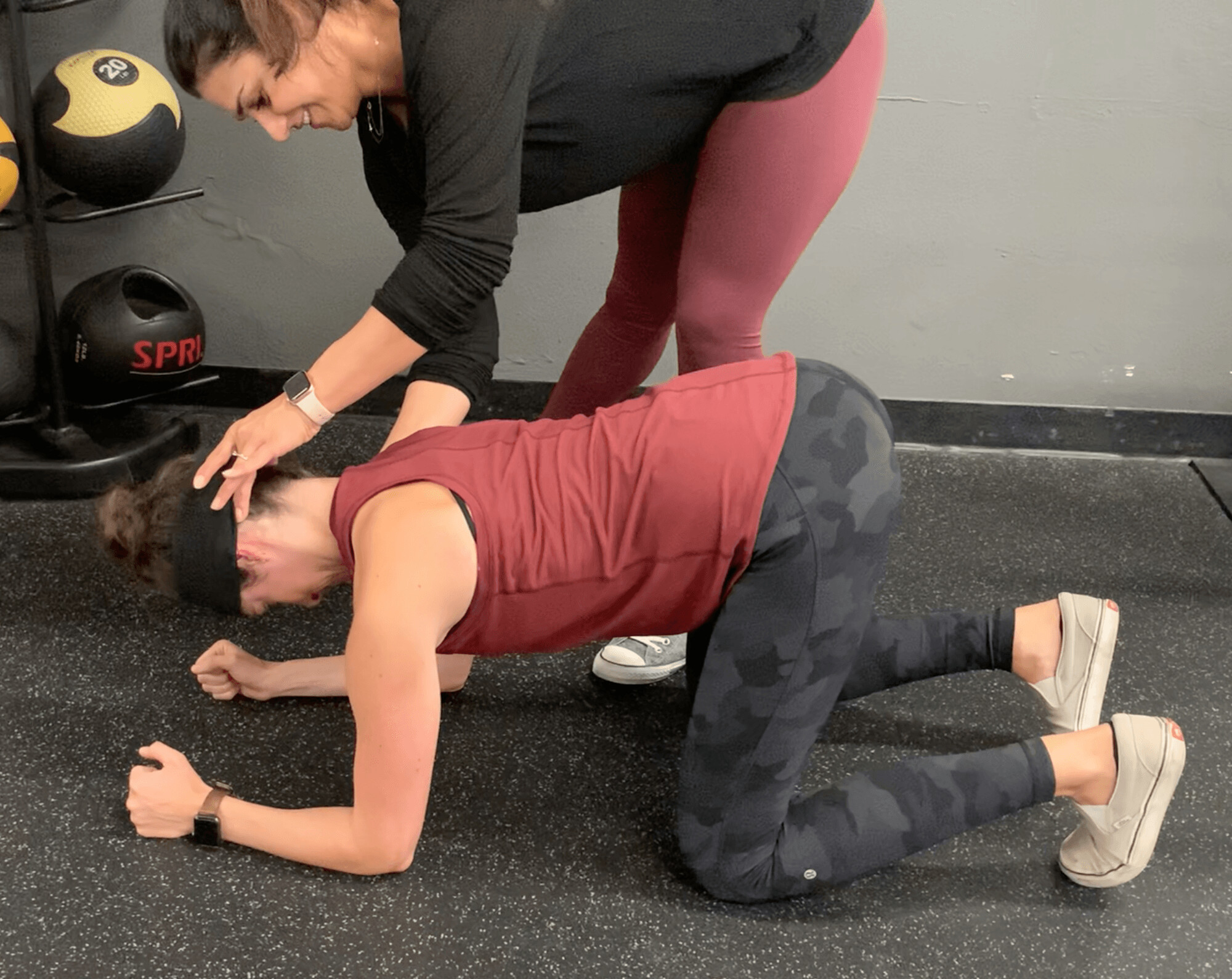We recently connected with Raquel Cunningham and have shared our conversation below.
Raquel, looking forward to hearing all of your stories today. We’d love to hear the backstory behind a risk you’ve taken – whether big or small, walk us through what it was like and how it ultimately turned out.
I have always had a desire to travel. Maybe it started by playing on my GeoSafari game as a little kid, maybe it was looking through all my parents’ art books, or maybe it was innate since I started walking at 7 1/2 months old. For some reason there were places I just had to go. In my mid 20’s I was ready for a life experience. The choices narrowed down to a 3-month long world adventure or move to New York City. My boyfriend at the time (now husband) and I decided to move to New York. Prior to the move, I already had the idea to make fitness programs for people with Tourette Syndrome based on breath work. (That was even part of my personal college admission essay.) I had no idea how I would do it, but that was the idea. When we decided to move, I wanted to have a purpose in going. If it wasn’t the world trip then why NYC? I decided to take a Pilates Apparatus Certification, never having had taken a class but I knew there was a breath component to it. That was my first training cert towards making this idea come to life. I didn’t understand the travel time of taking a cert on the Upper East Side and living in Brooklyn near the park so that was fun but I made it work. After that, someone recommended a gym to interview at in Greenwich Village with a company that had a reputation for educating their trainers. That was the most eye-opening experience from the education-through the company but majorly through the other trainers too. The camaraderie that came out of training in that environment and with that clientele was something I will hold dear to me forever. That gave me the hunger to keep learning and every learning opportunity was tinted teal with this idea that we could use fitness to help people like myself with Tourette Syndrome (teal is the color for TS awareness). That risk started my career as a strength & conditioning coach and exposed me to different movement disciplines, exercise science, and other health professionals. I started working with a high volume of different body types of fast-paced, goal-oriented people which began the professional experience of a 15+ year career in training bringing us to current day: the creation of TicFit.

Raquel, love having you share your insights with us. Before we ask you more questions, maybe you can take a moment to introduce yourself to our readers who might have missed our earlier conversations?
I am a strength and conditioning coach with Tourette Syndrome. I have a passion for movement and strength. I think the most beautiful athletic movement is the butterfly stroke in swimming. I was diagnosed with Tourette at age 5 and was a competitive swimmer and water polo player. The water was a playground for my tics but over many years I found a rhythm in the water that actually ended up helping me manage them. I had a gazillion different tics as a kid and they have definitely changed over the years. It is impossible if I can say whether they have naturally subsided over time or whether it is the daily practice of everything I have put into TicFit. There is no cure for Tourette but there have been many studies concluding that “general exercise” helps reduce tics. Both tics and exercise each have so many different forms. I want to know what kind of exercise for what kind of tics! People don’t tic symmetrically and tics don’t abide by optimal body mechanics. There is an incredibly high percentage of people with TS that have pain from their tics. I know we can do more work to study this to help people with TS get out of pain, learn how their ticcing bodies move, and find more specific correlations to reduce someone’s tic intensity, tic frequency, or reduce the urge to tic itself.
Since there is no cure, I believe the foundation of a management system based on exercise has two crucial elements: selecting exercises that help balance out your ticcing muscles (yes that includes blinking and vocal tics) and having a breathwork component that taps into our parasympathetic system. I also believe that people stall their breath when they tic which is why swimming was a huge help in my own personal tic management. It is the only sport where your breath is rationed so intensely. Think about it, you don’t repeatedly run 3 steps then take another breath, run 3 steps, take another breath. You do in swim. That spawned a curiosity with why breathwork and exercise helped me so much. Each sport or movement discipline has its own breathing style, we just need to tailor it to someone’s tics and optimize that person’s breathing patterns. I am on a quest to create exercise programs for people with Tourette based on ticcing body part to help them feel new patterns on their body. We need to actually feel the sensation of a muscle activating or releasing. Within this process I believe there is an avenue to find an inlet that creates a way to practice downshifting. If that downshift helps reduce tic urge, intensity, or frequency then we have something practicable.

Putting training and knowledge aside, what else do you think really matters in terms of succeeding in your field?
Connection, patience, and a deep desire to keep learning. Connection will help you meet someone where they’re at. It helps develop a trust that you can guide them through the bodywork they do, because they are the one’s doing the work. Heavy lifts, HIIT, taking needed rest days when they want to push harder, first time lifters, soft tissue work, doing a solo workout, there are going to be times clients push their limits or step in to an uncomfortable zone and you are the coach that guides through it all. Patience is knowing the process of change and adaptations. You cannot get from point A to point B without walking the trail, without going through the process to whatever that person’s particular goal is. Maybe they don’t know what their goal is and it starts to materialize as they feel better and stronger. Patience is keeping the trail clear so they can do the work to get to the next point. The desire to keep learning is just that. You have to reassess what is working and what is not working. If something’s not working, why? You cannot always assume they’re just not doing enough, maybe you need to give them a different approach.

Let’s talk about resilience next – do you have a story you can share with us?
The story about resilience is that TicFit is a real thing now. The intention has always been for these programs to be as evidence based as possible. I always try to be up to date with the ever-changing exercise science world AND be up to date with new revelations about Tourette. I have learned a lot and there are so many more areas I want to dive into. Not to mention learning the ins and outs of doing business, learning new software, making connections, recording/editing content, all with my own co-occuring conditions like ADHD. Oh yes, co-occuring conditions. There is a beautiful illustration of an iceberg to depict what living with Tourette Syndrome is like. The tics are the physical things others can see and hear which are the peak of the iceberg. Everything else, all of these proven co-occuring conditions with TS make up the bulk of the iceberg under the water that you cannot see. This has evolved into what it is now while navigating the waters on my own personal iceberg and from years of repeated brain dumping sessions that created a very intricate post-it system. This whole project is resilience… and a deeper understanding of resilience’s co-occuring conditions.
Contact Info:
- Website: https://www.ticfit.org
- Instagram: @_ticfit
- Facebook: none
- Linkedin: https://www.linkedin.com/in/raquel-cunningham/
- Twitter: none
- Youtube: https://www.youtube.com/@ticfit
- Yelp: none
- Soundcloud: none






